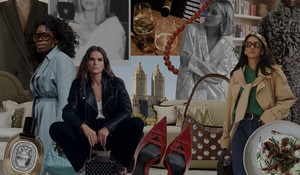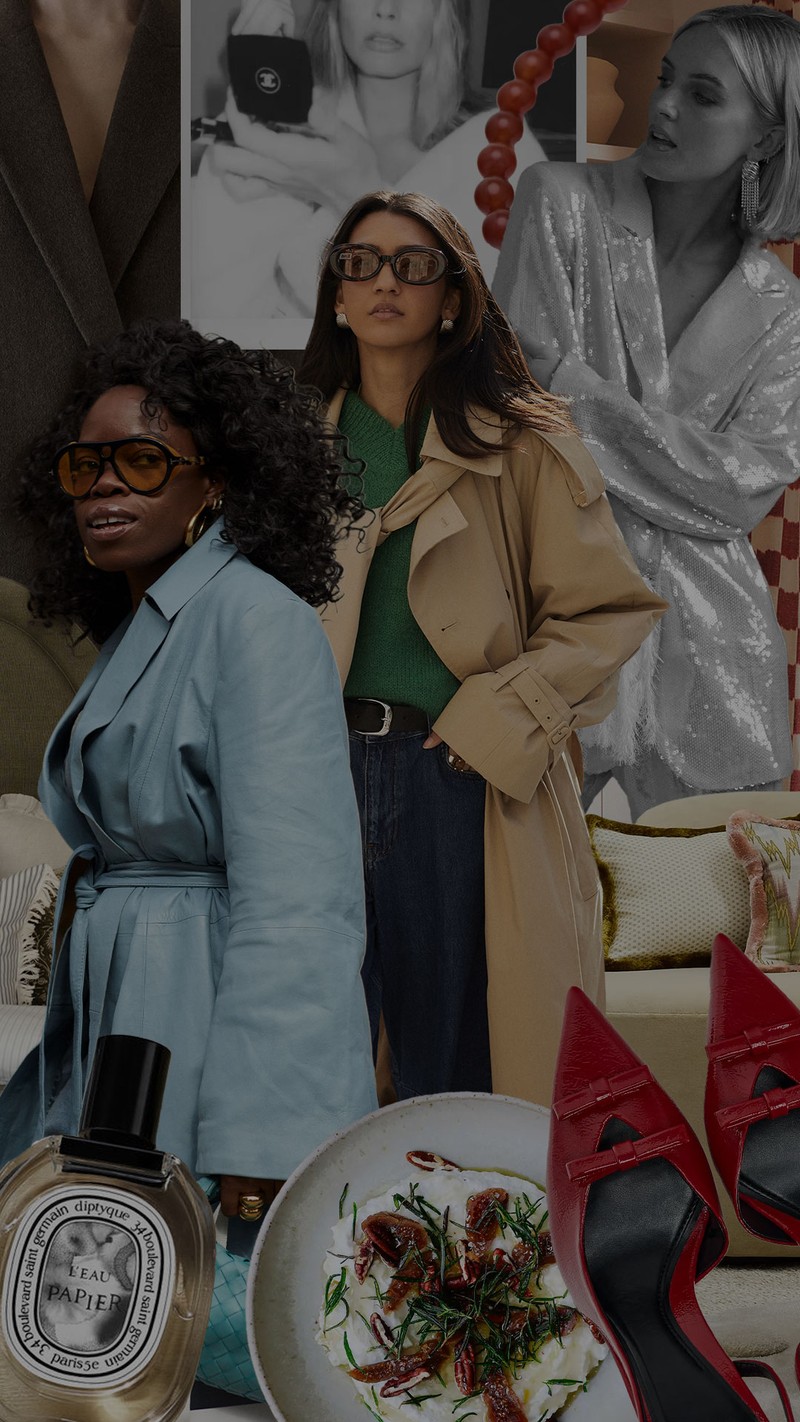
My Beauty Back Catalogue: Harold James
The Early Memories
My beauty journey started with my family. When I was as young as seven, my cousins and aunties would come to me, asking for my opinions on how they should do their make-up and hair, be it for a wedding or a first date. Instinctively, I had a sharp eye.
I grew up in French Guiana where the climate is warm, so my mother wouldn’t usually wear much on her skin, but she would always do an ombré lip. Blending purple, pink and fuchsia, it had a beautiful level of dimension. I’d watch her carefully applying it in the mirror – I definitely get the elegant part of my artistry from her. She loved a focal point, when she had something to say, she’d wear her trademark bold lip with flawless skin and nothing on the eyes. Other times, she’d wear a dramatic eye and nothing else. Her make-up was always very intentional.
The Experimentation Era
When I was growing up, I was fascinated by artists like Alicia Keys and Madonna. Madonna really understood the power of transformation, and was always coming up with a fresh new look. Then there was Diana Ross with a pop of blue on her eyes, paired with intense, spidery lashes. It was mesmerising. The 1970s and the 1990s are my favourite beauty eras.
Later, when I was studying political science in Lyon, I became friends with a make-up artist. I was amazed by the colours and textures, but also the connection with the client – I’d never realised this could be a job. One time, I was shadowing my friend and he had two clients at the same time. He asked me to look after one of them, and I was thinking, ‘He’s crazy, I’m not a professional.’ I was trying to be a good friend, so I agreed, and she asked for a smokey eye. I had no idea what that meant so I took a magazine, showed her a few different looks and she pointed out what she wanted. I was shaking but I did my best. When my friend finally came back into the room, he explained he’d only meant for me to give her tea or coffee! I was embarrassed but she was happy with the make-up and he was really surprised.
Eventually, he connected me with a make-up artist in New York and everything fell into place. After that, I spent some time in Tokyo then decided to travel further afield – South Africa, Peru, Brazil and Dubai – and learn how to do make-up on women from across the globe. That time was pivotal, I had to relearn so many skills, like how to separate the lashes and find the right undertone. Mixing my culture with that of my client gives me a really powerful perspective.
The Creative Approach
Everything I know about make-up, I’ve learned by doing. I listen to the women in my life explain what they wish to change, then work on enhancing their features, whether that’s defining the eyes, creating fullness around the lips or a more sculpted facial structure.
The way I do make-up is very instinctive. I never play by the rules. When you’re a beginner, rules can help you develop your technique, but when you master your craft, you have more freedom.
The Takeaways
While I was living in Peru, I had a client who was in her 80s. She was going out every day to dinners and parties. She was beautiful and working with her taught me so much about mature skin. She had lots of wrinkles and she taught me about avoiding shimmer and glitter.
In my kit, I’m never without a creamy foundation. It’s such a versatile product – you can apply it all over for a flat finish, build up the coverage or sheer it out with skincare. Another trick I always come back to is mixing a hyaluronic acid serum with a liquid blush to create a soft, watercolour effect on the cheeks.
When I started out I was broke, so I learned to be smart. I turned to professional pigment and used colour theory to maximise what I had in my kit. If I wanted a red lip, I would mix my products to create the right shade, or if a foundation was too warm, I’d add a bit of blue to make it cooler. Even to this day, I prefer not to carry around too many different products.
The Red Carpet Looks
When you sit in my chair, you arrive in a specific state of mind. After just an hour, you are transformed, empowered and more confident. That’s always the aim but I’m very attuned to how my client is feeling – it’s the most important thing. Sometimes, you’ve worked with someone previously on a bold, strong look and today, they’re just not feeling it and need something different.
Another consideration is how the look is going to photograph. At the Met Gala, there’s a lot of artificial light, so I’ll do the make-up quite differently to how I would for say, Cannes, where it’s natural lighting. For the Met, you can use more make-up, the light eats the make-up, whereas at a film festival, it needs to be much softer. My go-to is light base layers, after I’ve let the first layer dry I’ll apply a second layer using a pressing motion. This allows you to melt the pigment into the skin and it lasts longer.
One person I love working with is Eva Longoria. She loves glam, but she’s very trusting and open to experimenting. I always want the make-up to complement the dress – it’s the main event, whereas I want the make-up to play the supporting role. When the dress is really dramatic, flawless skin is enough.
For superior staying power, I can’t be without L’Oréal Paris Infallible Skin Ink. I used it on Laura Harrier for this year’s Met Gala and by the time the after-party rolled round, I didn’t have to top up her make-up at all, except for the lips. She was immaculate, I was in shock. To make the most of this foundation-concealer hybrid formula, you need to work quickly before it dries and buff it in with a dense kabuki brush for a flawless finish.
Follow @HAROLD_JAMES
SHOP HAROLD’S FAVOURITES




L'Oréal Paris,
DISCLAIMER: We endeavour to always credit the correct original source of every image we use. If you think a credit may be incorrect, please contact us at info@sheerluxe.com.




